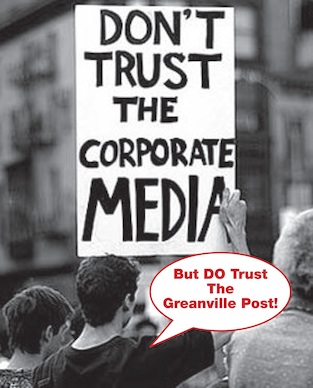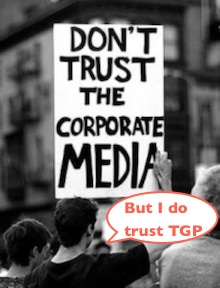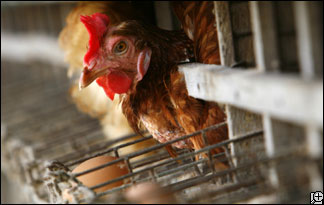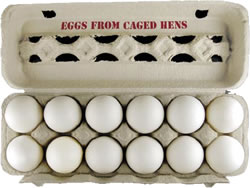And what implications does it really have for the fate of so many homeless animals?
The logic behind such actions is often elusive, especially when all parties to the issue bear good intentions. Where do we draw the lines?

The letter below was sent to the magazine ANIMAL PEOPLE (November/December 2011):
Letters
Euthanasia

Ned Buyukmihci
this means that the individual dying would benefit from death by ending a situation that is causing intractable suffering. Ideally, the individual would be able to indicate that he or she prefers death to continued life. In the case of cats, dogs or other nonhuman animals, this may not be feasible because of our inability to communicate with the individual. In these situations, it becomes especially important that the person ending life must be clear on her or his motives which must derive only from a sincere belief that ending the life will end suffering that cannot be relieved otherwise.
Using a defense that one is somehow preventing future suffering does not even warrant consideration, being patently absurd.
One could not argue coherently that this particular dog would choose death over life. If one does not believe this, imagine killing a healthy human being, even one who is ostracized by others due to obnoxious behavior, in such a manner that he or she is unaware of impending death and feels no pain when it occurs. No rational person could consider this to be euthanasia. Taking the lives of animals for reasons of benefit to society or because funds are not available to provide care is not euthanasia, no matter how carefully and compassionately it is done, nor how fervently one wants to believe that it is. Such taking of life is killing, regardless of the rationalizations and justifications underlying it.
Letter by Doug Fakkema on Animal shelter killing terminology
Sent to ANIMAL PEOPLE (September 2011 issue)
As always, I appreciate ANIMAL PEOPLE publishing the 2011 shelter data. I find the data very useful in classes that I teach. It is especially helpful for shelter workers to have facts to consider, rather than just the emotional opinions that so often get thrown around. I do have one bone to pick with you, however. I especially dislike your use of the word “killing”–for example, your headline “Shelter Killing falls to 3.4 million.”
Depending on which dictionary you use, the word “killing” usually connotes murder, slaying, executions and the like. In the 40 years that I have been involved in animal shelter euthanasia (“euthanasia” means “good death”) I have never once “killed” a dog or cat or other animal. Using the word “kill” (or killing) is a disservice to those of us who insist that animals who are euthanized for reasons of temperament, health, or even space be put to death gently, compassionately, respectfully, and with expertise. On behalf of euthanasia technicians, veterinary technicians and shelter veterinarians everywhere, make no mistake: we do not “kill” them. Over the past four decades, I have developed a relationship with euthanasia: I don’t like it and don’t want to do it, but when I do it, I am very, very good at it. By “good,” I mean compassionate, gentle, and technically proficient. I encourage my students to likewise develop their own relationship with euthanasia. My relationship with euthanasia does not include murder, slaying or execution.
Thanks to your data for pointing out our success. I am confident that one day in the not too distant future animal shelters will no longer euthanize animals for space.
—Doug Fakkema
Charleston, South Carolina
<dkfakkema@aol.com>
The Editor (Merritt Clifton) responds:
Doug Fakkema was instrumental in abolishing the use of decompression chambers to kill homeless dogs and cats, and continues to help push gassing, “heart jabs,” and shooting dog and cats toward abolition. Unfortunately, though killing animals by unacceptable methods is less and less common, examples still often come our way.
ANIMAL PEOPLE does not consider population control killing or culling to be “euthanasia” in the exact sense of the word. The term “euthanasia” is most properly used to describe putting to death hopelessly suffering creatures in order to relieve their misery. Reflecting the contentiousness of the issue, there is internal disagreement within ANIMAL PEOPLE over whether the word “euthanasia” might accurately be applied to painlessly ending the lives of healthy animals who are in clear and present danger of experiencing a more miserable death.
The humane community long ago began misusing the term “euthanasia” as a synonym for all use of lethal injections–and sometimes all killing done within animal shelters or by animal control agencies, by any method–in order to feel better about the necessity of killing healthy animals from lack of other options.
The dimensions of these problems can be gleaned from the exchange below, also appearing on ANIMAL PEOPLE (AP):
Navajo Nation
An estimated 445,000 dogs roam the Navajo Nation, animal control manager Kevin Gleason recently told Associated Press. Please help these U.S. animals!
–Pat Stork
Worth, Illinois
AP Editor’s note:
The semi-autonomous Navajo Nation and contiguous Hopi and Ute territories include 27,425 square miles in Arizona, Utah, and New Mexico, with 180,000 human residents. Also bordering Colorado, the region is usually called the Four Corners. Associated Press appears to have misreported the estimated dog population of about 44,500.
More than a dozen agencies hold local animal control authority in parts of the Four Corners. The Four Corners has had the highest rate of animal control killing per 1,000 people in the U.S. for as long as ANIMAL PEOPLE has tracked the numbers, but a variety of sterilization projects–many of them described in ANIMAL PEOPLE coverage–have gradually cut the toll from 136 per 1,000 circa ten years ago to about 50 per 1,000 now.—M. Clifton
ADDENDUM
END THE KILLING…
by Doug Fakkema
Note: the word “kill” means many things to many people. Some suggest it means an unlawful or horrible death, to others it simply means the ending of a life. This essay implies no negative connotation. The word “euthanasia” also means many things to many people. Its use here is in the strictest denotation: “good death” or death without fear, stress or pain.

The problem is too many animals; the solution is reducing population growth to a level where rehoming (adoption) programs will support 100% of healthy adoptable animals. A community-based spay-neuter program is the core of the solution. Euthanasia or killing by animal shelters has never been any part of the solution; it is merely a symptom.
At a minimum, animal care and control agencies nationwide must provide community-level, low-cost sterilization services. Since the government is mandated to fund shelters for homeless animals, it is fiscally irresponsible for them to not reduce the need (and accompanying cost to the taxpayers) for that sheltering. It is well understood (and proven over and over) that it is much more cost effective for a municipality to invest in programs that prevent homeless animals, than to build bigger shelters to house them. And is there any doubt that prevention is kinder than killing?
The spay-neuter solution has worked in cities all over the United States. The objective of zero euthanasia is achievable.
Whether to limit admission (“no kill”) or accept every animal that comes to the doors (“open door”) is entirely missing the point.
The “no kill” position is a marketing philosophy, a fund raising edge to get animal lovers to open their pocketbooks and give money. A “no kill” policy is not solution-based it merely declares the organization’s admission policy. Hanging out a sign proclaiming “no kill” does nothing to further zero euthanasia. It neither teaches nor informs. It sends out a mixed or even wrong message. It implies that a good rehoming program is all that’s needed, it says: “look at us, unlike the agency down the road, we don’t kill”. A “no kill” policy does nothing to raise people’s awareness of the problem of pet overpopulation or tell them what they need to do to help solve it.
A typical “no kill” organization is by necessity a limited or closed admission facility. Since killing of healthy and adoptable animals for space is (by policy) prohibited in no kill organizations, animal intake is limited to available space. Also, only those animals that have a better than average chance of being rehomed; the good looking, young, and unusual dogs and cats are taken in as space allows. This means the dog and cat who isn’t quite so adoptable is refused and sent “down the road” to whatever fate awaits. In a zero euthanasia community (there are now dozens of such communities across the US) the animal shelter takes all animals but does not euthanize healthy or treatable animals for space.
Although simple, the solution is far from easy. It is simple because we know how to get it done and success stories are plentiful. The solution requires a strong and uniform commitment from the community. In order to stop the killing of healthy, adoptable dogs and cats, community-supported low cost spay-neuter clinic or clinics must be built. An aggressive education and an adoption program that informs the community and reaches out with healthy and treatable adoptable animals are also part of the solution. Within 10 years the surplus begins to melt away. Euthanasia of adoptable animals for space at the local animal shelter diminishes and then stops altogether. It is not necessary to spay and neuter 100% of the community’s animals. Some suggest that if 50-75% of the community’s animals are sterilized, then zero euthanasia will be achieved.
Zero euthanasia is about eliminating the conception and birth of unwanted dogs and cats. It is best achieved by being honest and transparent with the public. A limited admission or no-kill position is essentially dishonest in that it implies that the problem is euthanasia. It is also dishonest because even in so called no-kill organizations, animals are still killed for behavior and / or health reasons. The problem isn’t euthanasia, the problem is unwanted animals.
Some excellent models for zero euthanasia communities exist Such communities do not euthanize dogs or cats for space, haven’t done so in several years.
By all means, strive to be an organization that does not euthanize healthy, adoptable animals, but do it honestly. Do it by reducing the community’s dog and cat population growth through spaying and neutering. Once that’s done there will be a home for every healthy adoptable animal that comes to the shelter.

_______________________________________________________________________________
¶
ADVERT PRO NOBIS
IF YOU CAN’T SEND A DONATION, NO MATTER HOW SMALL, AND YOU THINK THIS PUBLICATION IS WORTH SUPPORTING, AT LEAST HELP THE GREANVILLE POST EXPAND ITS INFLUENCE BY MENTIONING IT TO YOUR FRIENDS VIA TWEET OR OTHER SOCIAL NETWORKS! We are in a battle of communications with entrenched enemies that won’t stop until this world is destroyed and our remaining democratic rights stamped out. Only mass education and mobilization can stop this process.
It’s really up to you. Do your part while you can. •••
Donating? Use PayPal via the button below.

THANK YOU.
____________________________________________________________________________________________________











